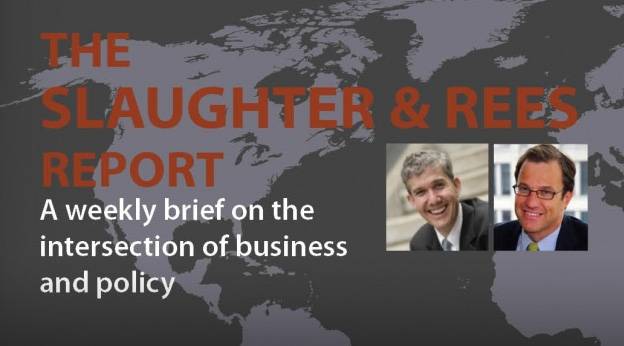Slaughter & Rees Report: The Remarks Chairman Bernanke Dreams of Delivering

Imagined remarks look toward a stronger economy.
In remarks at his June 19 press conference, U.S. Federal Reserve Chairman Ben Bernanke discussed under what conditions the Fed’s current policy expansion of “quantitative easing” might slow and even end. In the days since, global asset markets have swung dramatically. We imagine that many, perhaps even the Chairman himself, dream of a stronger, more-stable future.
“Good afternoon. Thank you for making time to attend this press conference. I would like to open with a few remarks explaining the unanimous vote of the Federal Open Market Committee to raise the Federal Funds interest rate by 25 basis points.
“Economic conditions in the United States and around the world continue to strengthen. The recent acceleration of U.S. job creation to a three-month moving average in excess of 300,000 confirms that the drop in U.S. unemployment to 6.4 percent is being driven by robust job creation, not by the labor-force exits that plagued America for so long. Especially noteworthy is the industry composition of these new jobs. Globally-engaged sectors such as business consulting, energy, information technology, and manufacturing are now among America’s fastest job creators. This is a marked contrast to the prolonged period during which the few jobs being created were concentrated in low-wage, low-productivity sectors such as temporary help services and eating and drinking establishments. Today I can finally stand before you and declare that America’s jobs crisis is ending.
“In hindsight, policymakers in both the Obama administration and in Congress are to be commended for their long-term, nonpartisan change of heart. Its trigger was the release, on June 26, 2013, of a report on U.S. gross domestic product. That report laid bare for all to see two things: the fragility of America’s recovery as it entered its fifth year, and the inability of monetary expansion (even when of unprecedented magnitude) to conjure robust long-term growth. In the first quarter of 2013, U.S. GDP grew at an annualized rate of just 1.8 percent. All of that growth was accounted for by household consumption spending. This, in turn, was driven by households unsustainably slashing their disposable-income saving rate to just 2.5 percent—the sort of shockingly low rate that prevailed pre-crisis and that helped transform America’s financial crisis into the world financial crisis by contributing to global imbalances. In sobering contrast, non-residential capital investment and exports, two foundations of sustainable long-run growth, together fell in the first quarter of 2013.
“Alarmed by these data, policymakers swung into action. Within two weeks, Congress passed comprehensive reform of high-skilled immigration that eliminated H-1B visa caps. Within two months, Congress passed comprehensive corporate-tax reform that slashed America’s corporate tax rate to 20 percent, gutted a thicket of industry-favoring tax preferences, and moved much closer to a territorial tax system. Within six months, Congress passed a credible medium-term plan to close projected fiscal deficits through a blend of automatic spending controls and pro-growth revenue raisers that eliminated distortionary tax expenditures such as the mortgage-interest deduction. And within one year, Congress inked sweeping trade and investment agreements with the European Union and with a number of trading partners—including China—across the Pacific Rim.
“Markets responded. Leaders of businesses both large and small in America rediscovered their animal spirits and stepped up their investments in new ideas, in capital, and, most of all, in people. America is now aggressively creating jobs, in particular high-productivity jobs connected to the world. This wave of optimism cascaded around the globe. Indeed, who among us would have predicted the latest GDP data from Greece showing its capital investment growing at the fastest rate in the Euro Zone?
“Printing money can never substitute for economic policies that boost the permanent incentives of companies to research, invest, and hire. Historic quantitative easing was never intended to substitute for courageous policy leadership. That courageous leadership was too long in coming. But come it finally did. And it explains the unanimous FOMC vote today to increase the Federal Funds interest rate by 25 basis points.
“Thank you for listening. I will be happy to answer any questions you may have.”